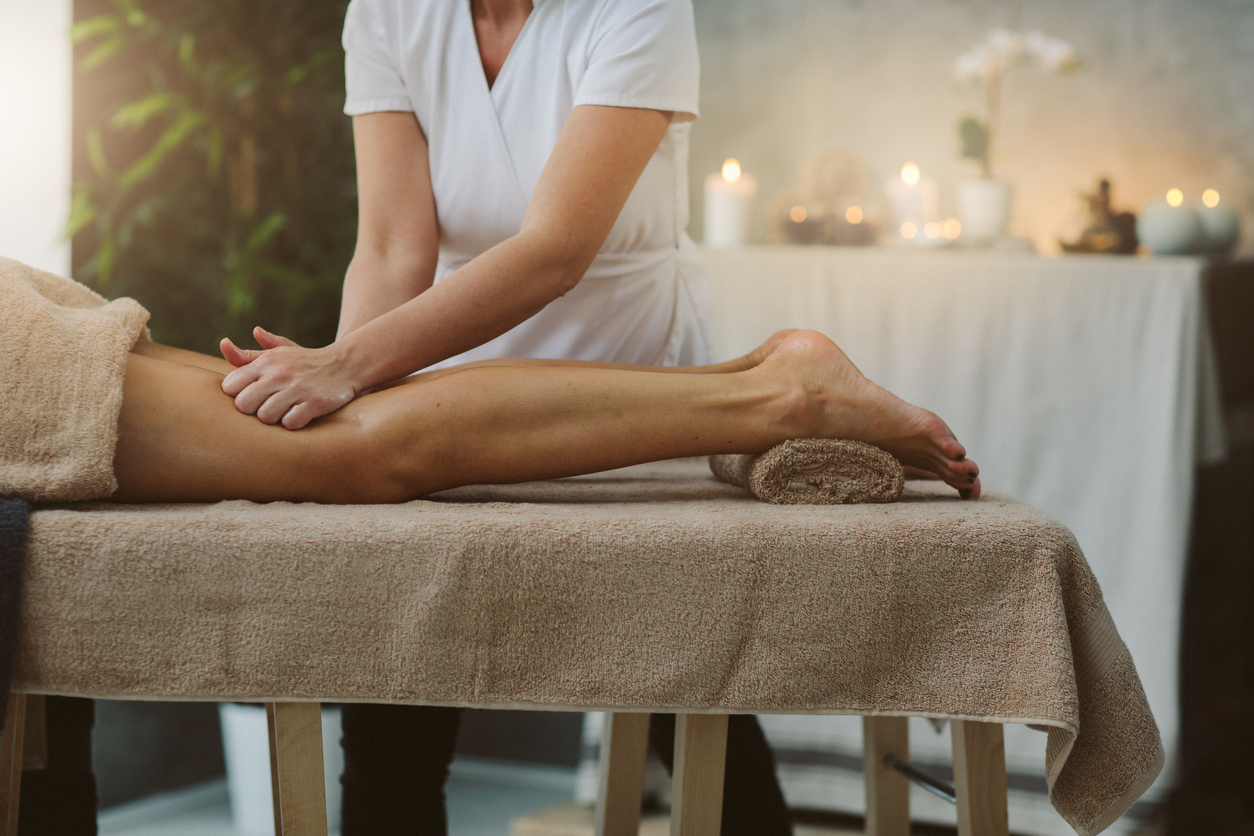
Massage therapy is a relaxing way to treat yourself, but surgery is still the most effective treatment for varicose veins.
Many patients wonder whether getting a massage could help with the symptoms of varicose veins — or even help the veins heal. Varicose vein sufferers often struggle with legs that itch, throb, cramp, and feel heavy. Compression stockings are a known way to relieve some of these symptoms because the gentle pressure increases blood circulation throughout the legs and prevents blood clots. It would be natural to assume that pressure is the key to treating painful veins.
But can massage therapy actually help varicose veins? In fact, although the gentle pressure of a massage may temporarily help with some varicose vein symptoms, it will not heal the veins or reverse the condition.
Table of Contents
ToggleThe Truth About Massage and Varicose Veins
Massage therapy is not an effective treatment for varicose veins for many reasons. From a medical standpoint, the underlying cause of varicose veins, chronic venous insufficiency, is not alleviated by massage. Venous insufficiency is a condition that occurs when the venous walls or “valves” of the legs are not functioning properly, meaning blood pools up instead of circulating throughout the legs. This causes painful swelling and skin color changes.
Massage therapy is effective for relieving the swelling and discomfort associated with chronic venous insufficiency, but it will not re-circulate the blood and “cure” the condition. At best, massaging the leg area around the affected veins will only make them feel better temporarily — it is not a medical or cosmetic treatment.
In fact, massage therapy could actually end up worsening your varicose veins, spider veins, and deep vein thrombosis (DVT). Since spider veins are so delicate, the intense pressure from a massage might further damage the weakened veins and cause them to burst. Massage is also contraindicated in patients with DVT because the pressure could dislodge a blood clot from the leg and release it back into the bloodstream, which could cause serious health complications.
However, this doesn’t mean that varicose vein sufferers must stay away from massages altogether — you need to take extra precautions. If you are considering massage therapy for symptom relief, not vein treatment or reversal, make sure you connect with a knowledgeable massage therapist who knows how to work with affected veins. Tell them to use a very light touch and not to massage the affected veins directly.
Treat Your Varicose Veins Safely With Surgery
Surgery is the only way to safely and effectively treat varicose veins for good. Surgical vein treatments work by closing off the affected vein so that it collapses and a new, healthy vein can take its place. Vein treatment procedures are minimally invasive, painless, and resolve the physical and cosmetic issues caused by varicose veins. Microphlebectomy is a very popular treatment option among patients because their varicose veins completely disappear within a few days of the procedure, and they can resume normal activities within a day.
Once you have recovered from vein surgery, you’ll be free to enjoy a relaxing calf massage without worrying about how it will impact your veins.
Ready To Breathe New Life Back Into Your Legs?
Massage therapy is a relaxing treat, but you will need medical treatment to fully relieve symptoms and make your veins healthy again. If you’re interested in learning more, contact the vein treatment specialists at Vein & Vascular Institute today. Visit one of our four New Jersey locations to meet our team, learn more about vein treatment options, and see inspiring before and after photos.
